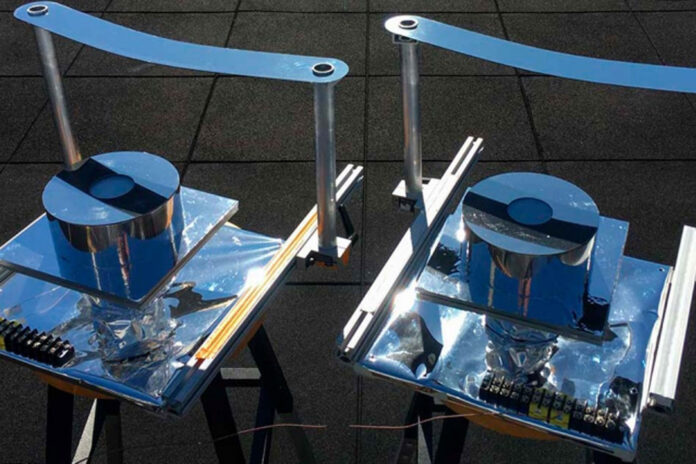Keeping Cool Without Air Conditioning
Throughout most of human history, people have had to find ways to cool down their food and buildings without the convenience of modern technology like air conditioning or refrigeration. One of the oldest and simplest methods is to use the shade of a tree to escape the sun’s rays. Another approach, used in Mediterranean villages for centuries, is to paint buildings white to reflect the sun’s radiation.
How Passive Daytime Radiative Cooling Works
The principle behind passive daytime radiative cooling (PDRC) is to use materials that reflect solar radiation while also emitting infrared radiation, which can release more heat than it receives. To achieve this, scientists often use advanced materials that incorporate nanotechnology, allowing them to reflect certain wavelengths of solar radiation and send them back into space.
A Simple yet Effective Solution
Researchers at MIT, led by Bikram Bhatia, have developed a passive cooling system that uses extremely simple materials. The system is essentially a high-tech version of a parasol, combining a base that emits radiation in the mid-infrared range with a reflector that blocks direct sunlight. The reflector is designed to provide shade at different times of day without needing an active sun-tracking system. The team placed a box underneath the reflector, containing an infrared emitter, a copper sheet painted white and placed on top of an insulator, and two layers of polyethylene with a small gap to minimize diffuse solar radiation. The perimeter of the box was covered with silver foil to prevent the transfer of parasitic heat loads.
Testing the System
The team tested their system in the Boston area, where they achieved a cooling effect of 6°C. However, they believe that the system would be even more effective in dry areas, with a maximum theoretical cooling of 40°C. This simple device could be very useful in areas without access to electricity or as a supplement to existing cooling systems to reduce energy consumption.
Cooling Paints
In addition to the MIT system, researchers at Columbia Engineering have developed a polymer-based paint that can reflect infrared radiation and cool down buildings passively. The paint, which can be applied to buildings, water tanks, and other structures, has been shown to reduce surface temperatures by 6°C. The team is now exploring commercial applications and scalability.
Conclusion
These innovative cooling systems offer a promising alternative to traditional air conditioning, which is a major contributor to energy consumption and greenhouse gas emissions. By using simple, low-tech materials and leveraging the principles of passive daytime radiative cooling, scientists are developing effective and sustainable solutions to keep us cool without breaking the bank or harming the environment. As these technologies continue to evolve and improve, they may soon become a viable option for people around the world, reducing our reliance on air conditioning and promoting a more sustainable future.

